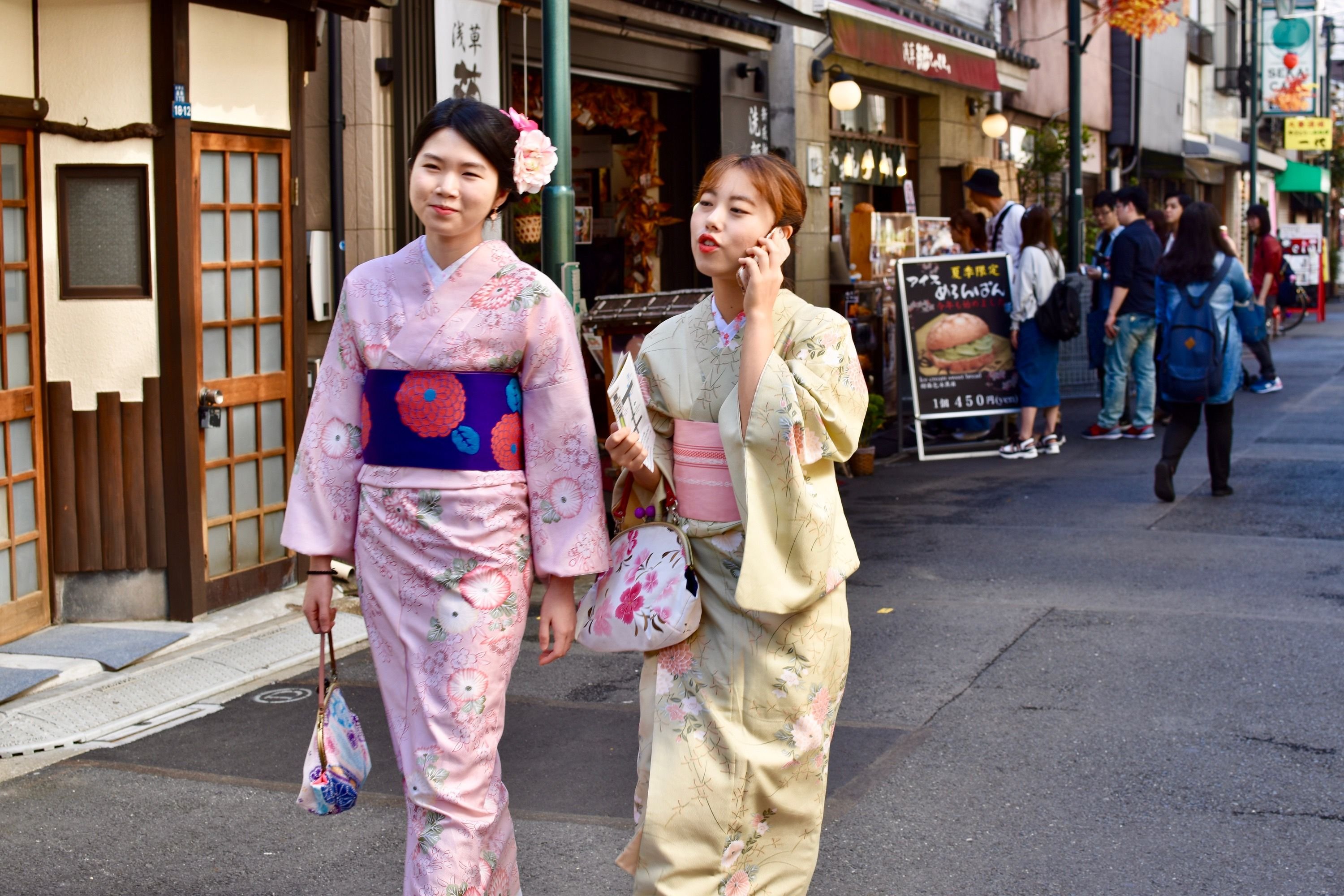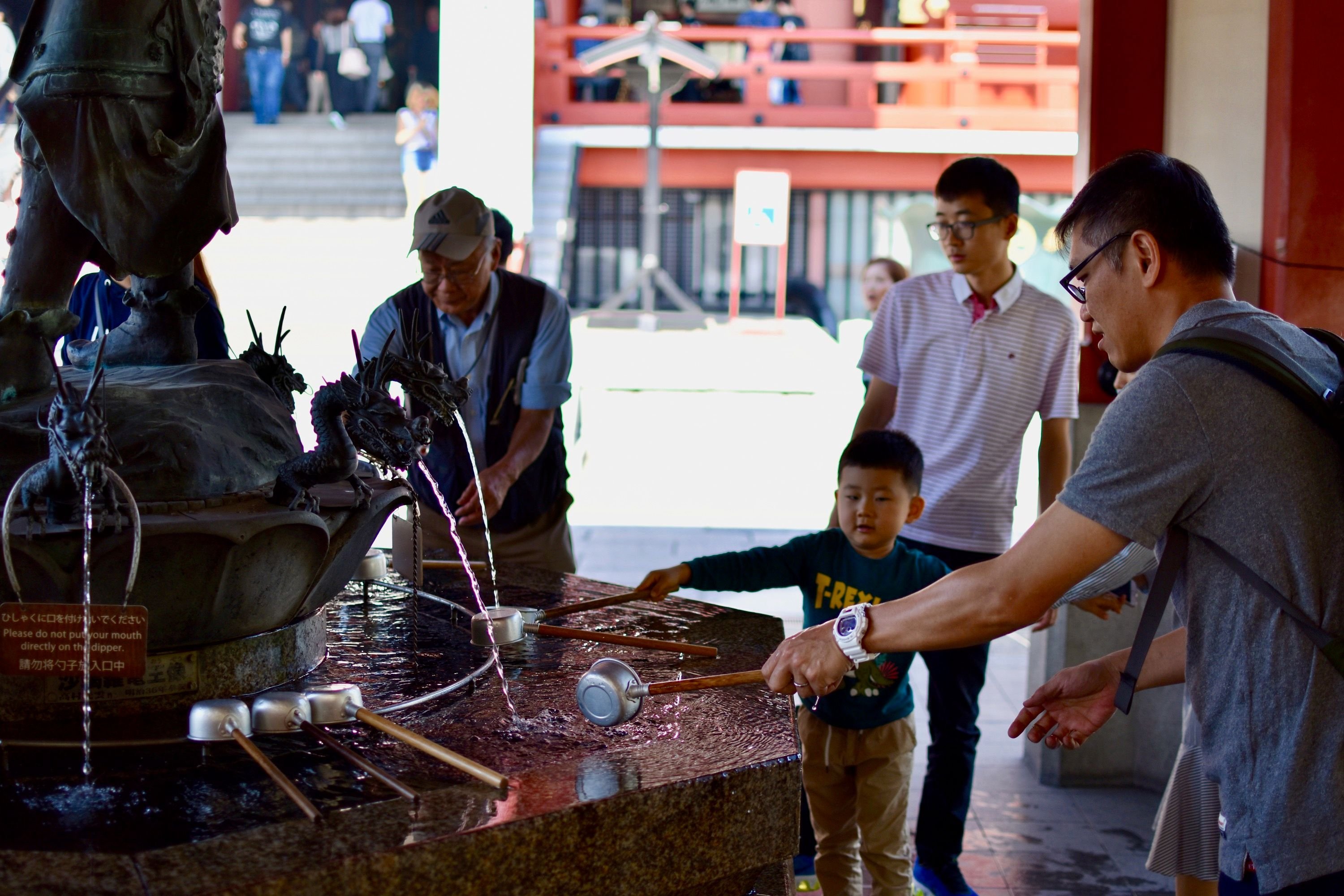This is an authorized translation in English of a post in French by @japon: Asakusa, plongée au coeur du quartier historique de Tokyo
Remember that the person that speaks here is NOT me, Vincent Celier (@vcelier), but @japon, a French guy.
If there is a place that reflects the historical side of Tokyo, it's Asakusa. A few subway stations from Ueno Park, I arrive at the Nakamise Dori. A large shopping street with many shops on either side, full of tourists.
Some women are dressed in traditional kimono, some tourists photograph them thinking that they are geisha. No, a woman dressed in a kimono is not necessarily a geisha. It is probably a young Chinese who has rented a traditional costume to plunge into the atmosphere of traditional Japan. Young Chinese couples are very fond of these outfits. It costs about 3000 yen a day (about 25€ or US$30), with kimono, accessories and hairstyle.


After a few days in Japan, I quickly made the difference between a real kimono worn by a Japanese, and those rented for a day. These are too often overly blooming and colorful (while we were in October). The Japanese women instead wore kimonos in solid colors and much more discreet.
I enter the Nakamise Dori and its many merchants of souvenirs, not always in very good taste, nor very religious. I notice that businesses are also located in perpendicular streets. In addition to being quieter, they are also fewer tourist traps. A few steps away there is also a great shopping arcade as we sometimes see in the center of major Japanese cities. It is a street literally covered with a roof. The advantage is that it is dry when it rains, it protects from the cold and gives a warmer atmosphere.
The focal point of Asakusa is the Senso-Ji Temple, a Buddhist temple dedicated to Kannon, the goddess of compassion. The main entrance is via a huge door that overlooks the Nakamise Dori: Kaminarimon (or door of thunder). It is easily recognizable by her large hanging red lantern.
Everyone is trying to make a selfie, I'm trying to make my way in. In the big court, a big censer around which people gather to purify themselves by the smoke. With their hand they guide the smoke of incense towards their head or the part of the body that hurts them.

This Buddhist complex is really big, with several buildings of a more modest appearance but which are nonetheless uninteresting. The central esplanade is still crowded with people, including many foreign tourists. Fortunately I will visit much more Zen places the following days. I deviate a little to appreciate the place as a whole and remains planted in front of the big pagoda which is impressive!
At one point I hear music and I notice a crowd around a scene. Interesting: a concert of traditional music inside a temple!
Finally I can not say that I really loved this place. Too crowded, too noisy, too touristy. I came to Japan for more serenity and discover the country from the inside. But the architecture of the place is particularly beautiful, so I decided to give it another try.
I came back a few days later, but in the evening. It was dark, it was raining, the place was empty. Yet it was beautiful. The lighting of the different buildings takes on a whole new dimension.
-- @japon
Travel diary in Japan, by @japon
Tokyo, overcrowded city? Really? by @japon
Are the Japanese too disciplined? by @japon
Going to Japan without speaking Japanese? by @japon
Ueno, more than just a big park in Tokyo, by @japon
